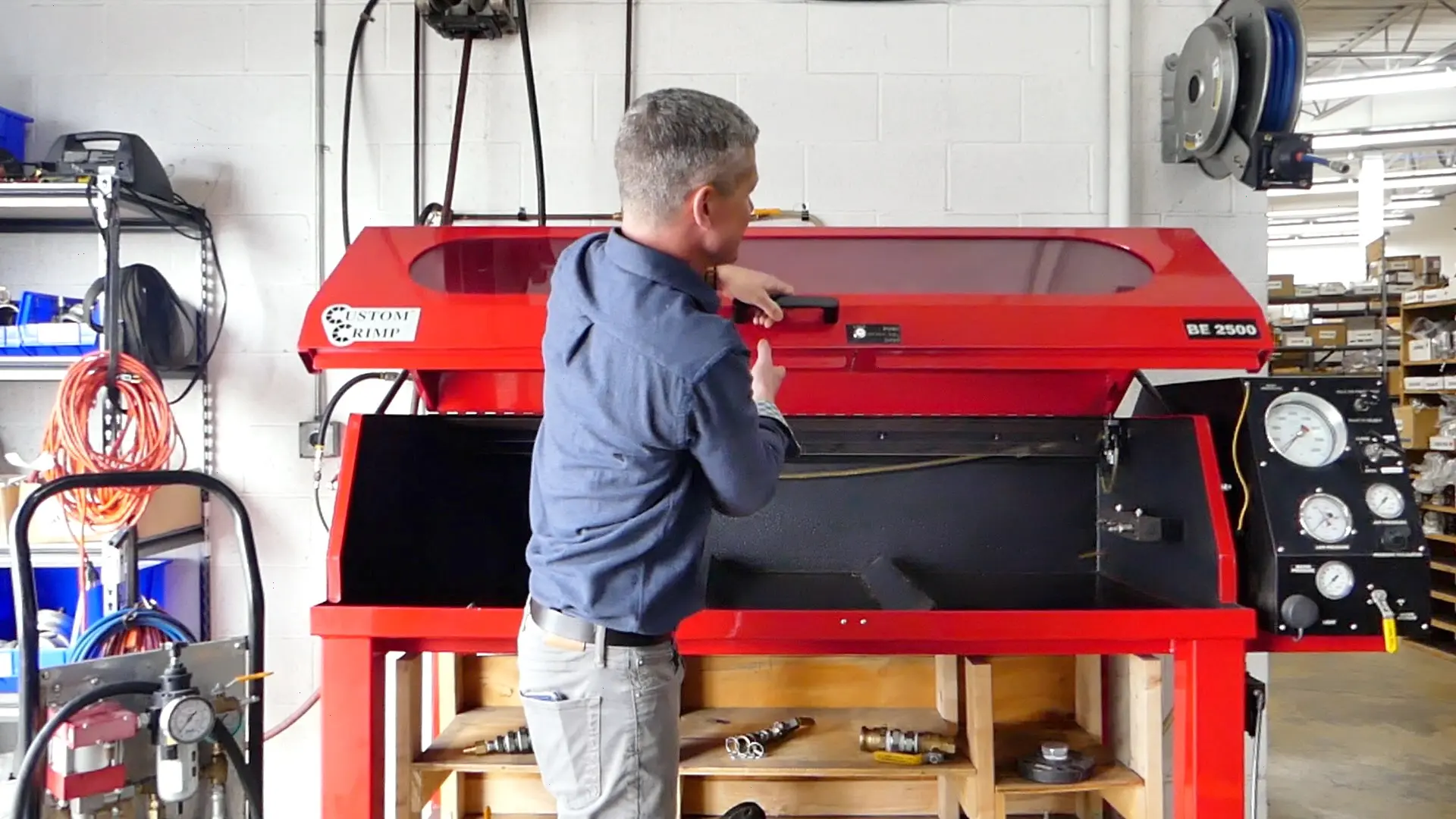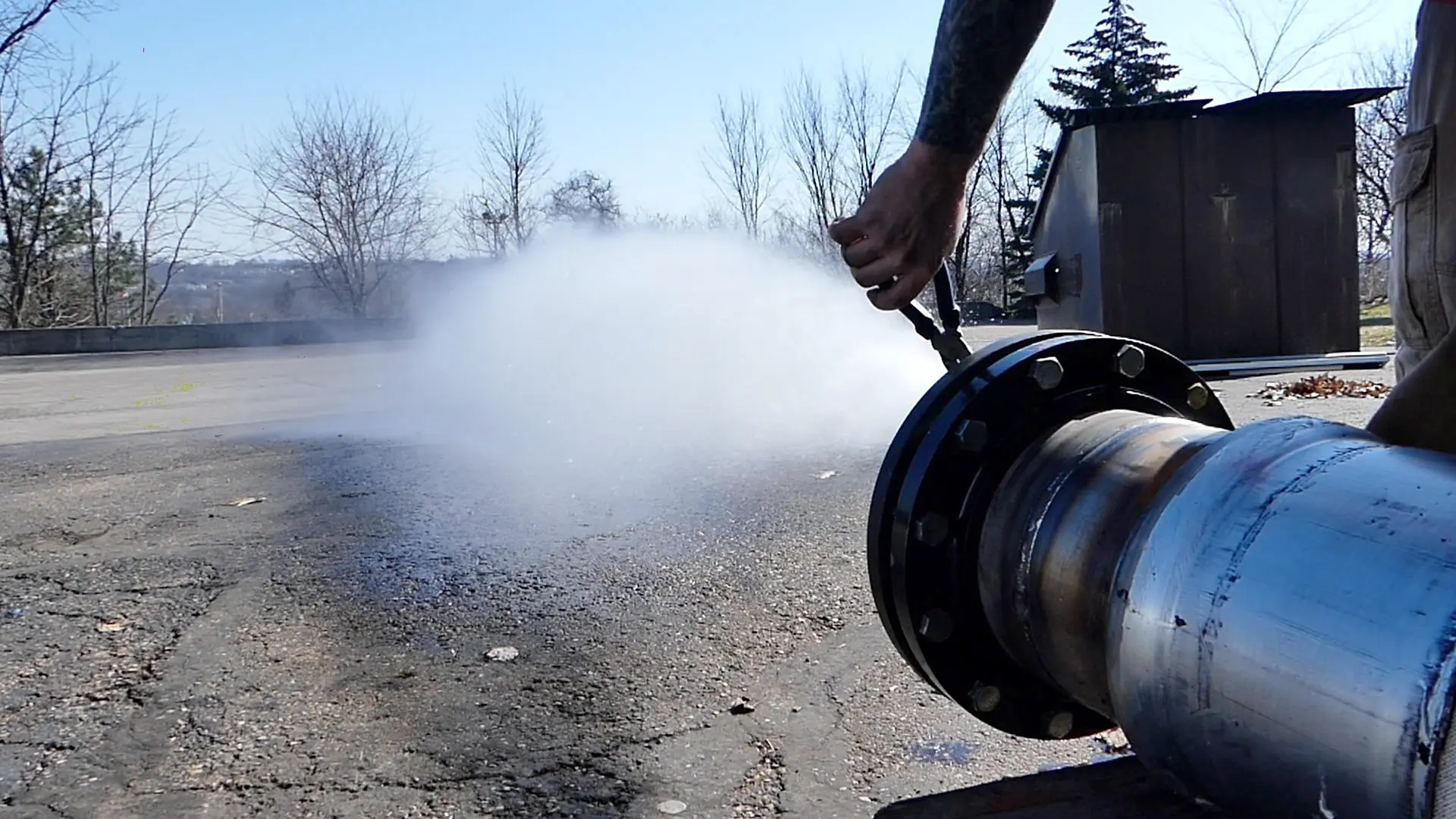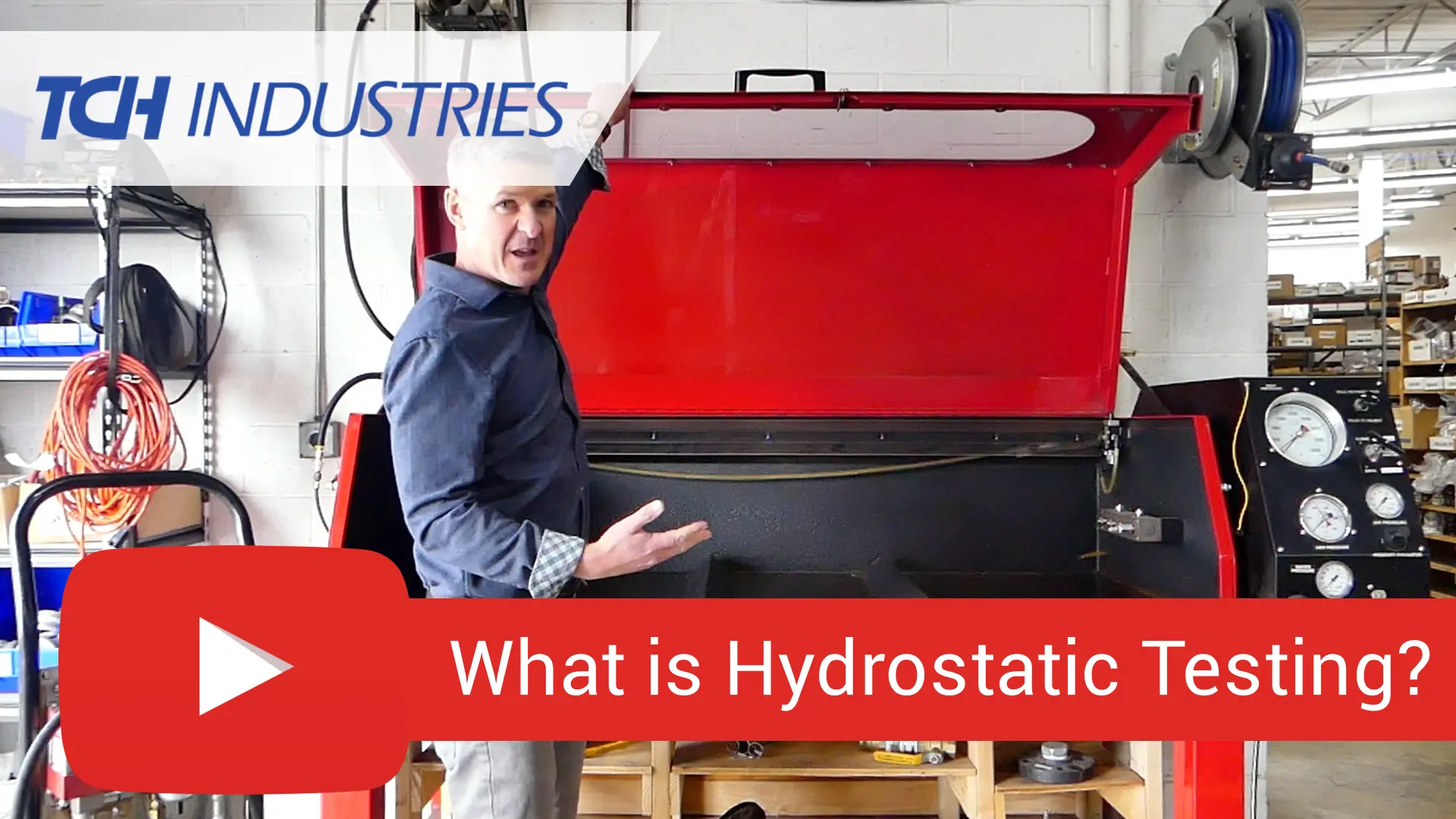What is Hydrostatic Testing for a Hose?
Hydrostatic testing is the process of pressurizing a hose or pressure vessel with water to a specific pressure. Holding the pressure for a duration of time, and testing for strength and leaks. As a result, hydrostatic testing is a way of ensuring that a hose or container (such as storage tanks) will be able to retain the pressure that the item is rated for. And that it will not leak or fail once pressurized.
There are times when proof testing is required. A proof test is a typically performed at 1.5x the rated working pressure. As a result, this will confirm the hose assembly meets the pressure rating of the assembly. Hydrostatic pressure testing will also ensure that the ends have been safely and properly fitted, and that the assembly is leak free.
According to NAHAD–The Association for Hose and Accessories Distribution–the following are required when testing is performed:
| HOSE TYPE | PRESSURE | REQUIRED TIME |
| Industrial | Minimum 1-½ times working pressure for assemblies unless otherwise required by the customer or designated hose specification. | 5 minutes |
| Hydraulic | 2 times working pressure unless otherwise required by the customer. | 30-60 seconds |
| Composite | 1-½ times working pressure unless otherwise required by the customer. | 1-4” nominal bore: 5 minutes |
| Fluoropolymer | 1-½ times working pressure unless otherwise required by the customer. | 1 minute |
| Corrugated metal | Contact the manufacturer for maximum test pressure for each hose. | Contact the manufacturer |
How Does Hydrostatic Testing Work?
Before we get started on hydrostatic testing, it’s important to understand what kind of equipment is required. Depending on the type of test, a hydrostatic pressure test requires a pump or power source. These can include a hand pump, power driven hydraulic pump, or an accumulator system. We recommend, as does NAHAD, that the test is performed in a test tank. Just like the one shown below.

NAHAD: For assembly testing, the rating of the component with the lowest rated working pressure determines the working pressure of the assembly. For example, If you have a 3,000 psi hose, but the ends are only rated for 2,000 psi, the entire pressure rating of the assembly is rated to 2,000 psi.
What Are Signs of Failure in a Hydrostatic Test?
- Weeping/leaking
- Excessive elongation of hose
- Hose barb not properly retained, slides out of assembly
- Bubbles form in cover or pinholes leak
- Hose burst
How to Perform a Hydrostatic Test
As we have said a few times already, we’ll be referring to the NAHAD guide for the step-by-step process on how to properly preform a hydrostatic test:
- Ensure that your hose is as straight as possible, and slightly elevating one end of the hose. This will ensure any trapped air is expelled.
- Cap or plug one end of the hose assembly.
- Completely fill the system with water. Doing so will ensure that the water level will expel all trapped air inside the hose.
- It’s extremely important to use a bleed valve to release trapped air in a pressurized assembly, as a safety measure. Failing to do so will result in the expansion of air compressed in the hose when released suddenly, and can result in serious accidents.
- After that, mark a reference line behind the fitting at the end of the ferrule, clamp, band, etc. This will help with identifying any elongation of the hose, or coupling slippage.
- Once the prior steps are completed successfully, gradually raise the pressure to the desired rating. Hold at this pressure for the time indicated in the chart referenced above. Meanwhile conducting a visual inspection of the assembly. While the pressure is rising, watch for deformation, leakage, and coupling slippage. Any of which will be cause for rejection.
- While testing, the assembly should be totally leak free for the entirety of the test.
- According to NAHAD, leakage is defined as a continuous stream of water droplets emitted from a single or multiple locations.
- Finally, after the test is completed, relieve the pressure before disconnecting and drain the water from the hose.

What is the Difference Between Hydrotest and Hydrostatic Testing?
Hydrostatic testing can be easily confused with hydro testing. Hydro testing is more commonly used in pipe applications, such as pipelines for plumbing or oil and gas pipelines, fuel tanks, and other piping systems. Water is run through the system at a predetermined PSI to identify leak points. Hydrostatic testing, as we mentioned before, is the process of water pressurizing a hose or container with water to a predetermined high pressure to verify its structural integrity.
TCH Industries
Our focus and obsession is the distribution and fabrication of hose for industry and hose related products. Founded nearly 40 years ago, we are proudly owned and operated by the same family. Our manufacturing partners are some of the biggest and best names: Eaton, Parker, Dixon Valve, Hose Master, Brennen, Hannay Reels, and many others.
In short, we are a customer-centric hose company filled with happy professionals who can help you meet all your hose related needs. If you have any questions, please reach out to us by filling out the form below!

